Analysis of natural compounds
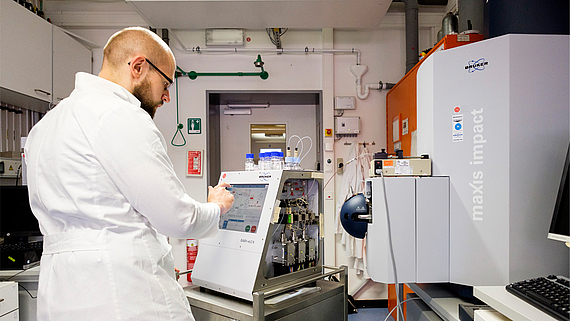
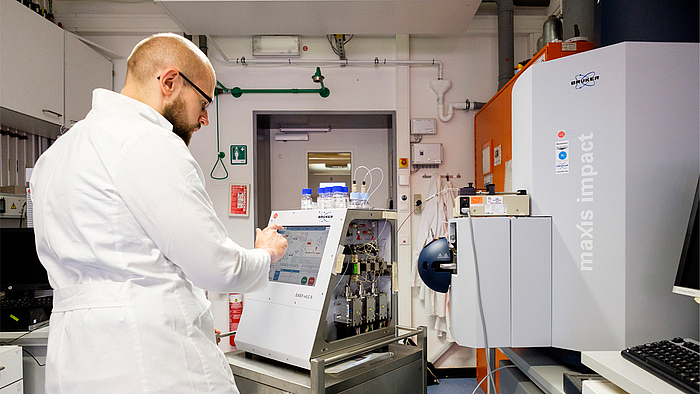
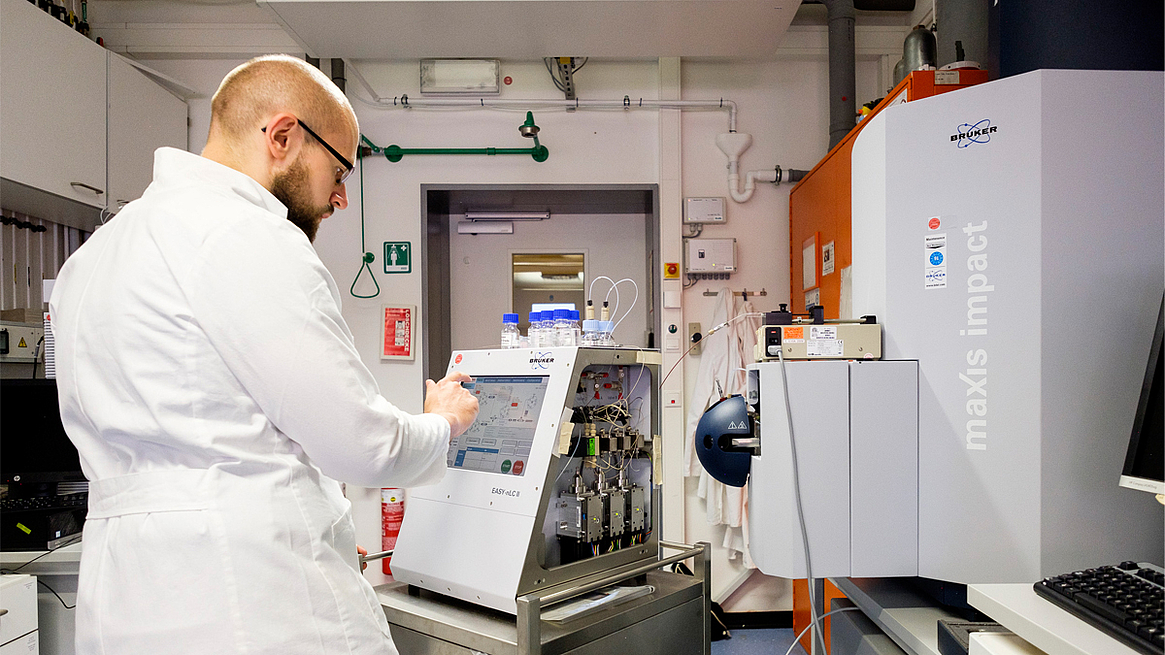
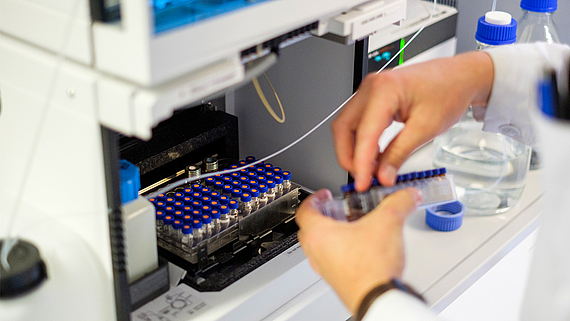
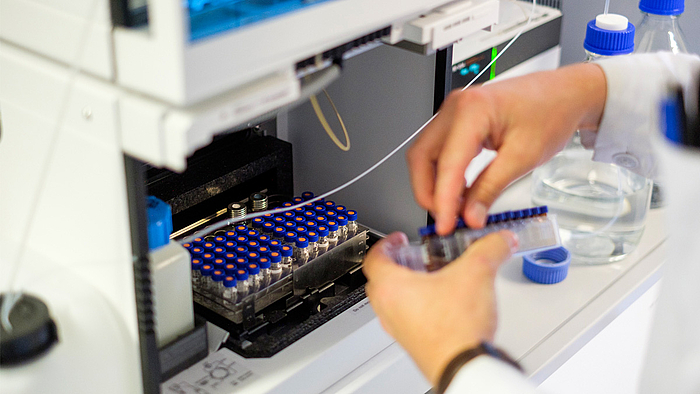
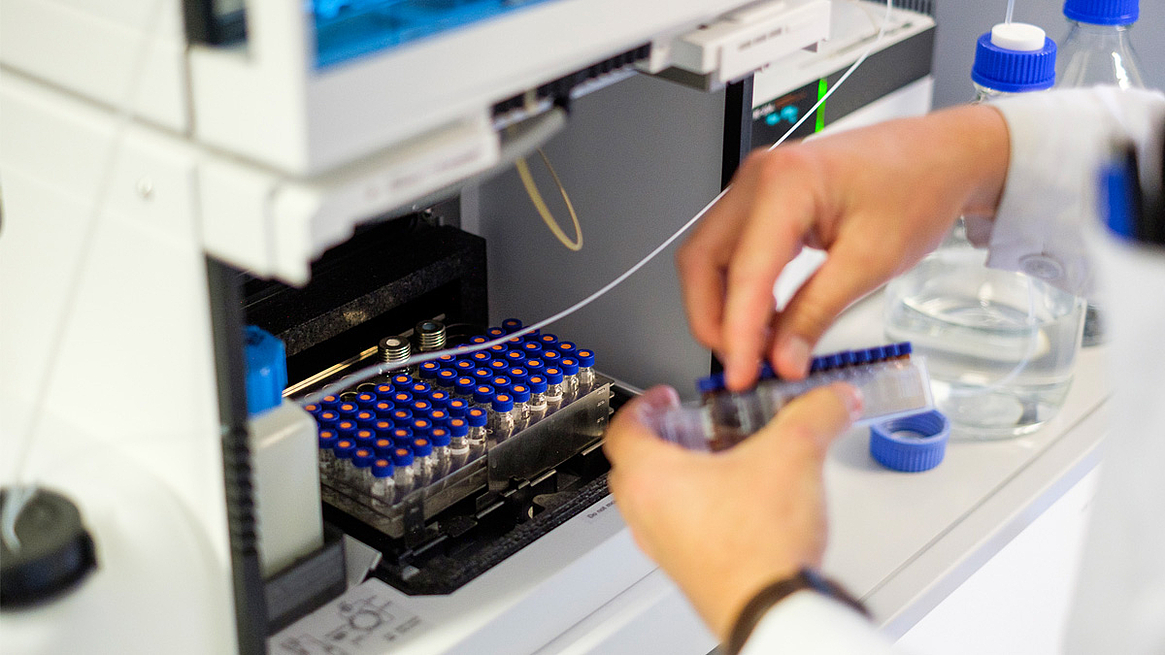
Chromatographic, spectrophotometric and electrophoretic methods generally used for the analysis of food are also used to determine the metabolic processes of cells and characterize the specificities of enzymes. The spectrum of analyzed compounds range from small food contaminants to valuable ingredients like flavour compounds, vitamins and dyes to larger metabolites like the cobalamines ( B12 vitamines) up to large proteins like enzymes.
Problems in the analysis of volatile compounds (formation of foam and emulsions, unfavourable partition coefficients) are solved by solid-phase extraction from a liquid or gaseous (headspace) matrix followed by thermal desorption-gas chromatography with olfactometric and mass spectrometric detection. Non-volatile metabolites are derivatized or analyzed through liquid chromatography. LC-MS/MS and the corresponding ionization and collision variants enable identification and quantification of compounds. Proteom analyses are performed after one and two dimensional electrophoresis with a nLC-ESI-QTOF-MS/MS followed by bioinformatic evaluation. These multifaceted instruments are the methodological foundation for the following three areas of our research.
Biotechnology with basidiomycetes and algae
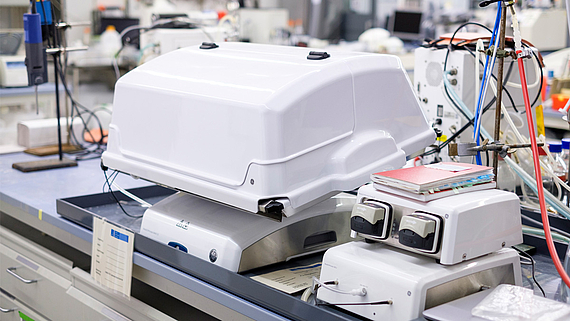
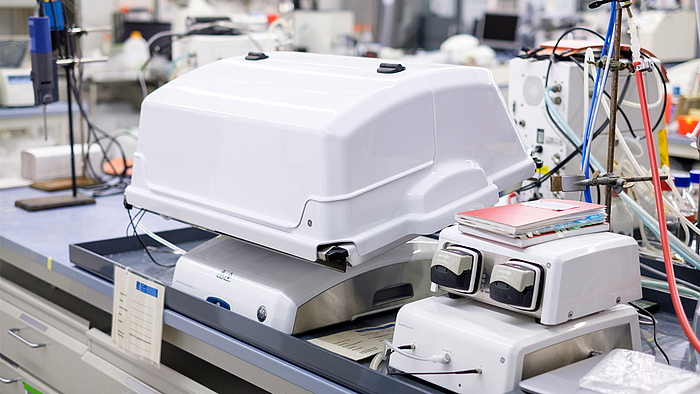
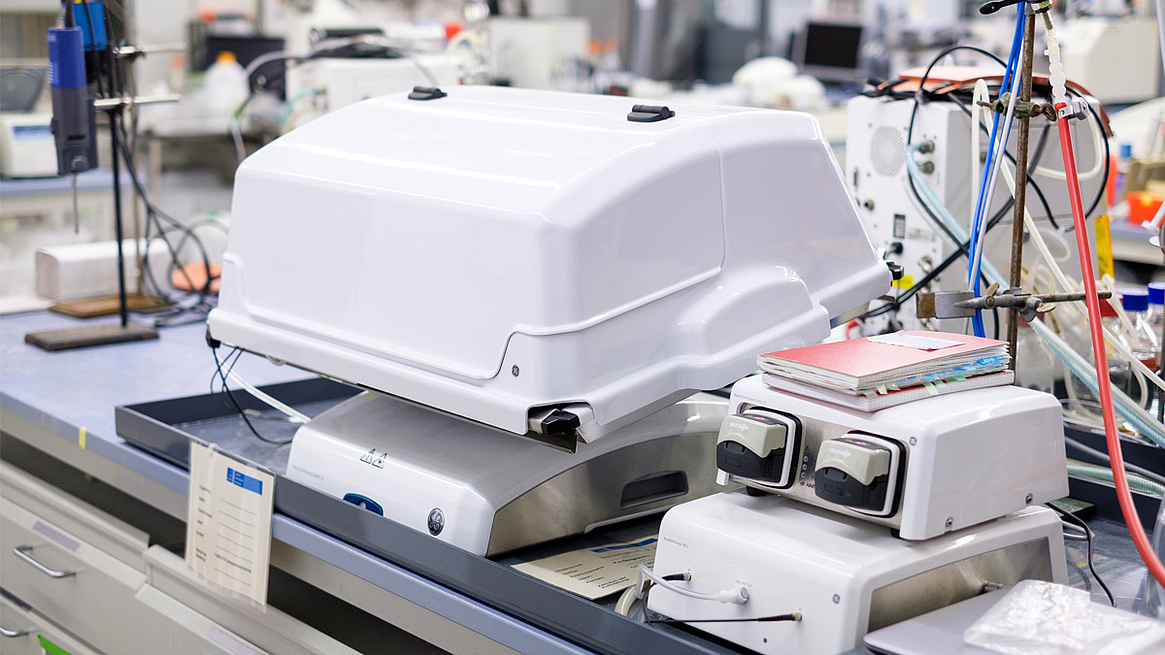
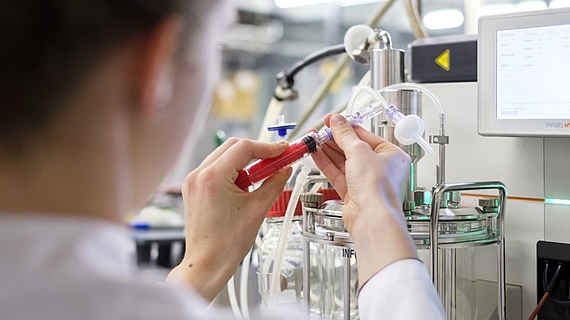
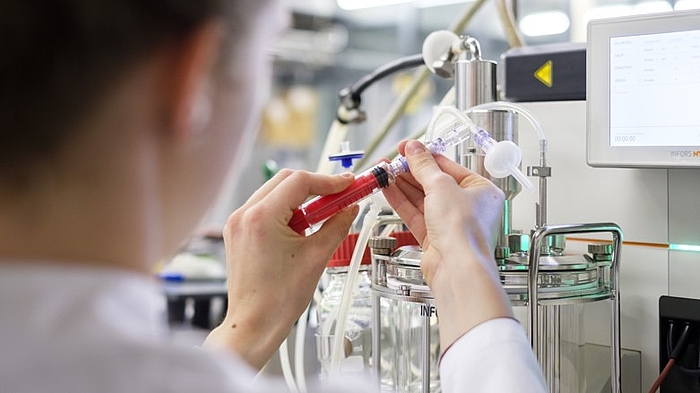

The elucidation and utilization of the metabolic potential of basidiomycetes is one of the main research areas of the institute. Along the ascomycetes, they belong to the "higher fungi" and containg about 30,000 species or 30 % of all know fungi. Cell cultures of these complex microorganisms form various terpenoid or phenolic compounds either through de novo synthesis or biotransformation of suitable precursors. They grow especially well in the presende of side streams of the agroindustry like peel, bran or pomace.
Recently, the institute has begun researching the use of different microalgae. These marine organisms are already used as food or nutrional supplements. Among other compounds, they contain Vitamin B12 and add to the vitamin supply on a vegetarian or vegan diet. Addtionally, they are a valuable protein source and can form industrially relevant terpenes.
The usage of high volume sidestreams of the food and agroindustry enables the substitution of expensive components for the growth media. Furthermore, these sidestreams often have an inducing effect on the formation of the desired products.
Basidiomycetes and algae: Current research topics
-
Natural dyes from fungi
Natural dyes are generally obtained from plants. However, these can usually only be grown once a year and are subject to changes in the environment. As an alternative, we propose the use of cell cultures of pigmented higher fungi (Basidiomycota) that grow in a bioreactor under controlled conditions. In order to enable a bio economic production, the processes utilizes side streams of the agricultural industry.
-
Triterpenes from algae
Triterpenes like squalen are important biomolecules that are widely used in cosmetic products or as precursors for the steroid biosynthesis. Industrial squalen is mainly derived from plant and fish oil but mostly shark liver oil which is a factor in the endangerment of sharks. The goal of this project is the production of triterpenes in microalgae that grow on side streams not utilized by the industry. In this way, we aim to create a sustainable process aiding in protecting biodiversity.
-
Terpene cyclases
Essential oils like citrus or mint oil are widely used in the food, cosmetic and pharmaceutical industries. Its most valuable components are mono- and sesquiterpenes that like many plant metabolites can only be chemically extracted from plant material. The similar biosynthetic capabilities of basidiomycetes enable an alternative process. Through identification and heterologous production of the responsible enzymes, the terpene cyclases, we aim to develop a targeted and sustainable production of odor-active terpenes.
-
Genetic variability of monokaryotes
Monokaryotic strains of basidiomycetes contain different genetic contents after meiosis. Therefore, they are a natural reservoir of genetic variations and thus biochemical properties. Using natural selection, this enables the development of optimized strains for biotechnological applications without the use of recombinant methods.
New enzymes for the food industry
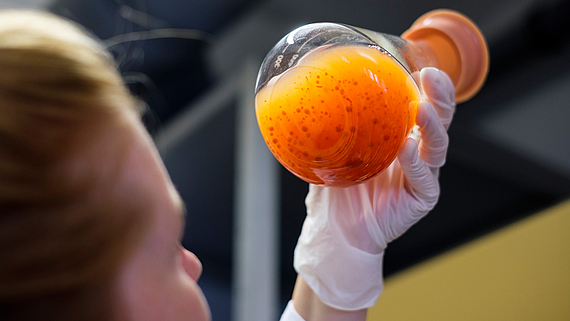
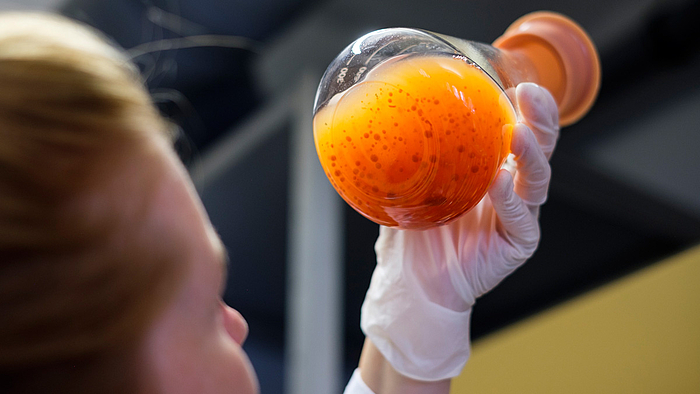
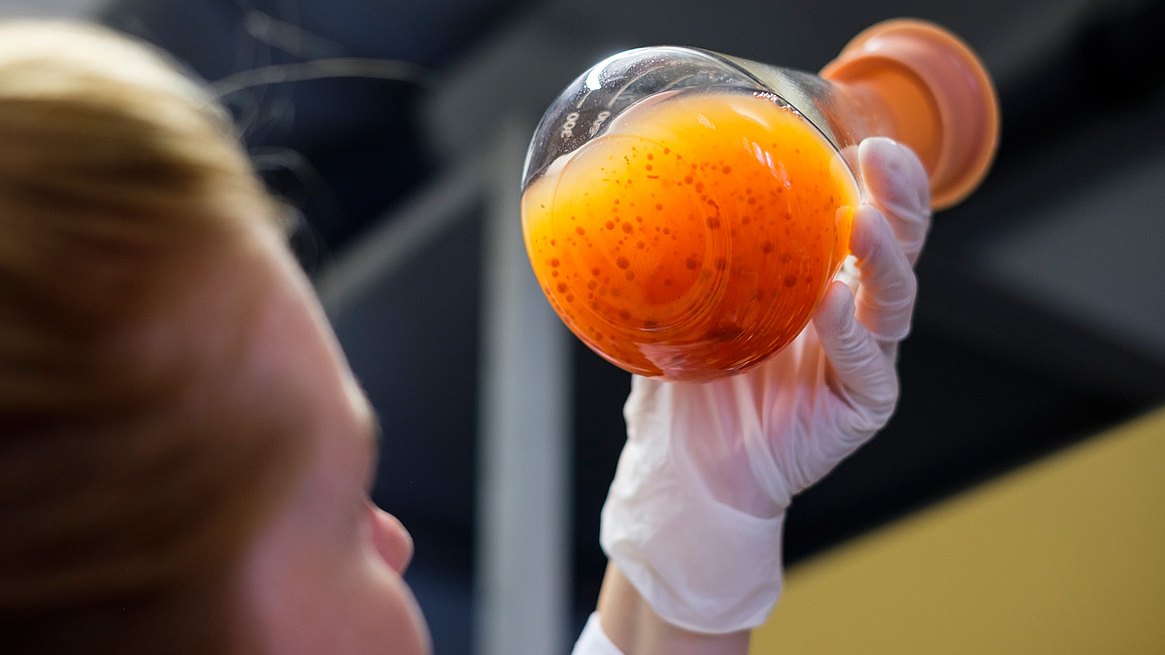
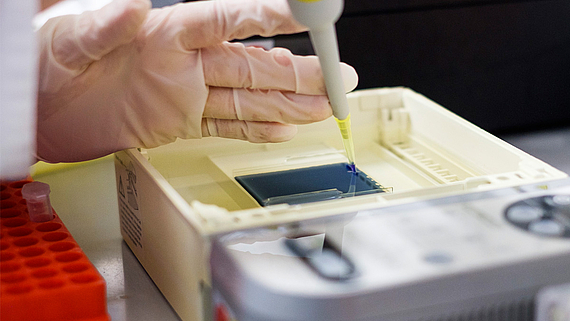
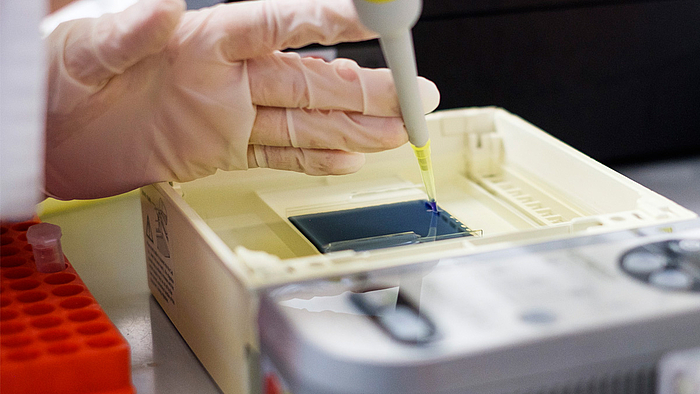
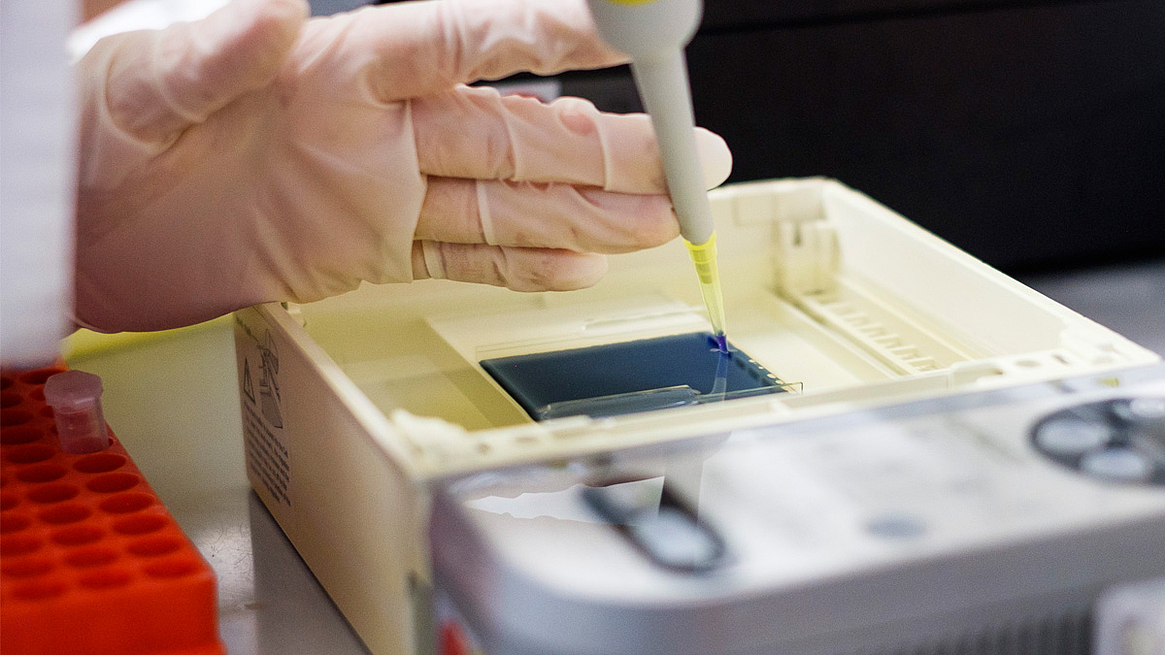
Basidiomycetes can grow on different substrates like wood, foliage or forest soil. In order to utilize these nutrients, they secrete a multitude of different enzymes like for example peptidases. The food industry is already using peptidases for the formation of flavour, maturation processes and for total hydrolysis on an industrial scale. Other enzymes can increase the digestibility of beverages like coffee, enable the utilization of new protein sources like canola protein or could be used for the creation of alternative food products for example for people wanting to refrain from ingesting gelatine from animal sources.
Submerse cultures of basidiomycetes can be screened for enzymes with the desired properties. After a suitable enzyme is found, the gene encoding the enzyme is often expressed in pro- or eukaryotic hosts (Escherichia coli, Komagataella, Aspergillus) to enable the targeted production of the enzyme on a larger scale.
New enzymes: Current research topics
-
Reduction of the salt content of food
In most industrial nations, the salt consumption is double the amount recommended by the World Health Organization (WHO) and is correlated with many health risks such as high blood pressure and other cardiovascular diseases. We are researching the enzymatic production of salt-taste enhancing peptides that aid in reducing the salt content of food without impairing its flavor.
-
Natural taste-enhancing peptides
Besides sour, sweet, salty, and bitter, umami is the fifth and least known taste modality. The meaty, broth-like taste enables the reduction of salt content and creates a pleasant savory taste. Umami is mainly elicited by monosodium glutamate (MSG). Because of scientifically unfounded but nonetheless critical customer opinions, we are searching for natural peptides as MSG replacement in food.
-
Reduction of bitter substances in canola protein
Canola protein represents a substantial side stream generated by the production of canola oil. Usage in food is impeded by its intensely bitter off-taste caused by the Kaempherol glycoside. Employing enzymes for a targeted cleavage of kaempherol may enable the utilization of this biologically valuable protein source as human nutrition.
-
Degradation of chlorogenic acids in coffee
For many people, the enjoyment of coffee is hampered by gastric discomfort that among other factors is attributed to the containing chlorogenic acids. Degradation of chlorogenic acids by increasing the roast temperature or time inevitably changes its taste and odor. The enzymatic degradation of chlorogenic acid in coffee grinds or beverages has been shown to produce better digestible products without impairing its flavor. Since then, the developed process has also been successfully applied to apple juice which is also rich in chlorogenic acids.
-
Vegan gels
Gelatin serves a crucial role in the food industry as a gelling agent. However, due to its animal origin, it is not suitable for many people due to various reasons. For this project, plant-based gels were created from side streams of the food industry by enzymatic oxidative cross-linking and then characterized. These novel gelling agents possess gelatin-like rheometric properties.
Biotechnology of flavour compounds
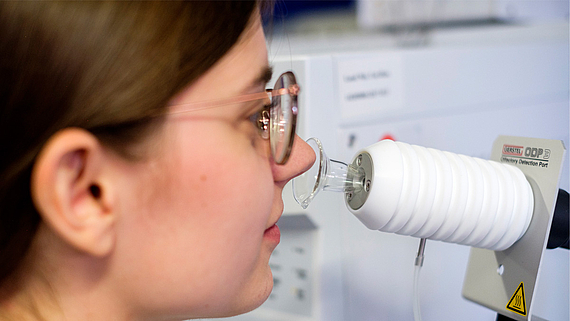
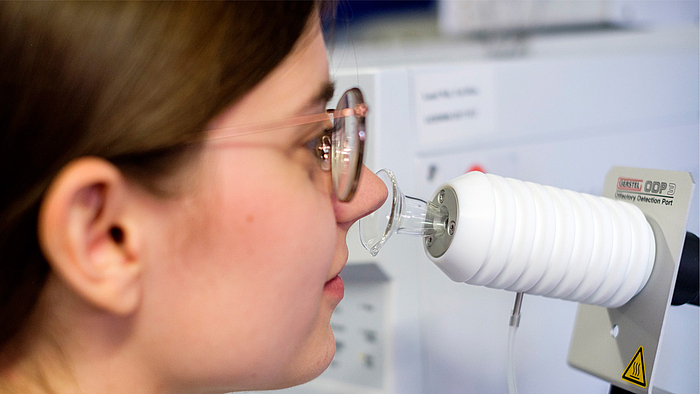
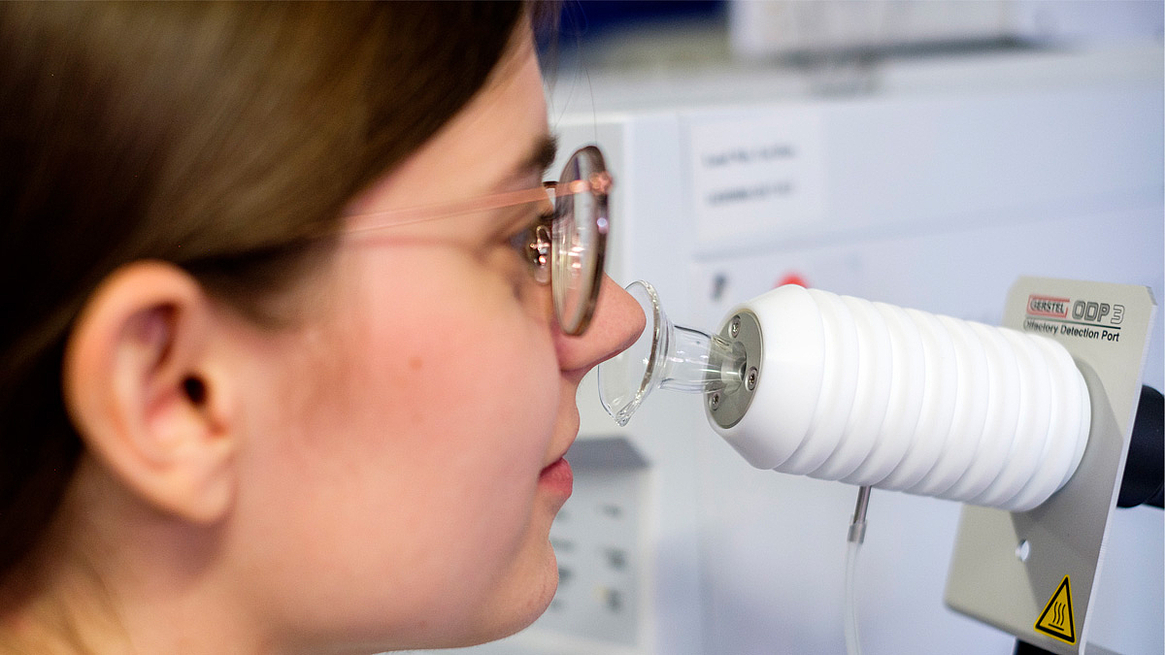
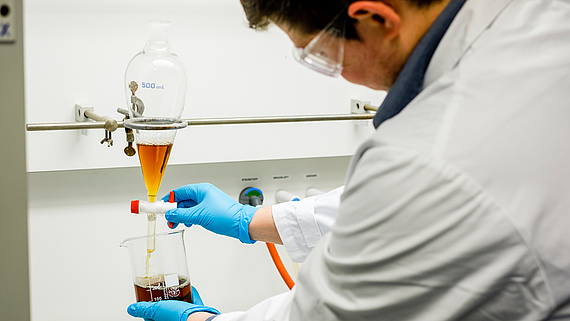
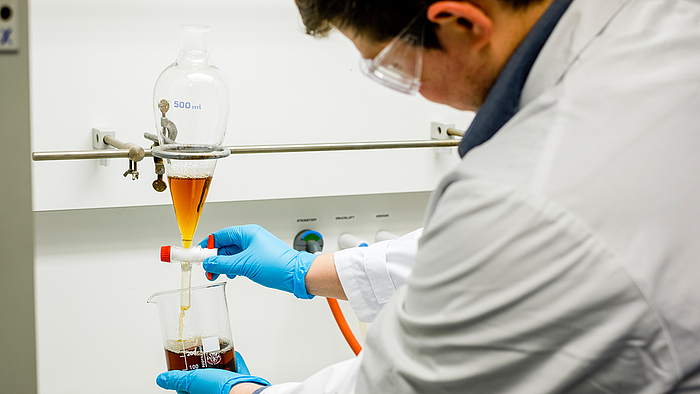
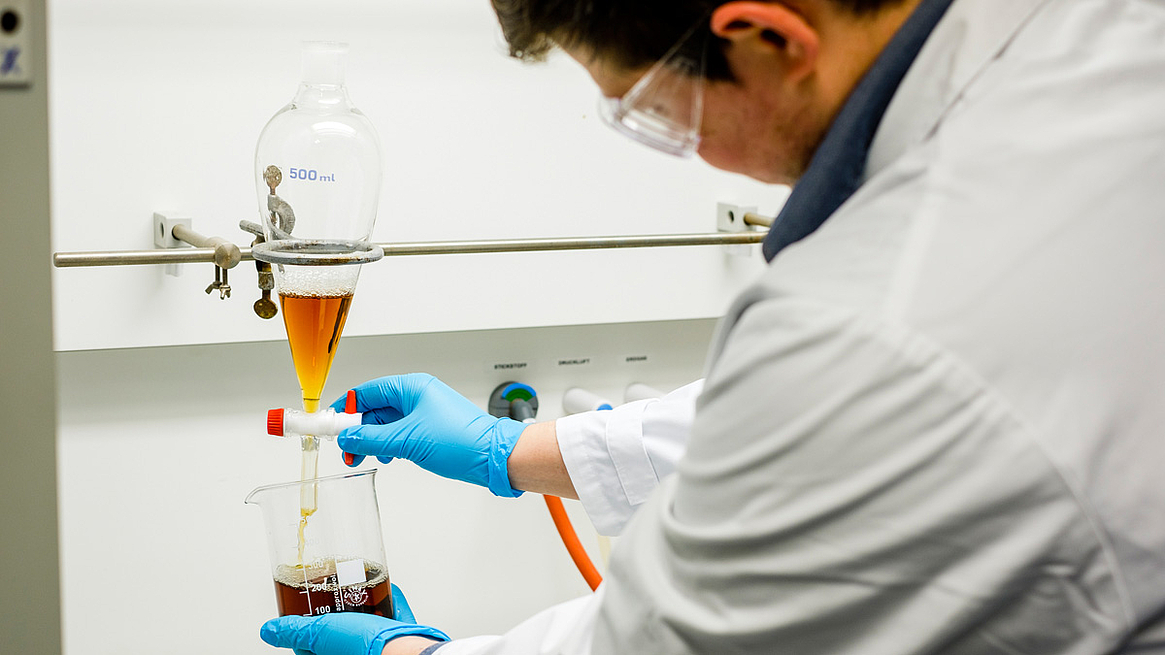
Basidiomycetes produce a wide spectrum of volatile compounds and are suitable both for the production of known flavour compounds and the identification of new ones as well. With the help of techniques like the olfactometric GC-MS, the volatilom of cultivated fungi can be characterized and key flavour compounds identified. In order to elucidate unknown biosynthesis routes, experiments with labeled precursor compounds are performed.
Microbial systems produce flavour compounds with the desired attribute "natural". Furthermore, bioprocesses with cell cultures or enzymes have significant advantages over conventional chemosynthesis. Selective and specific one pot reactions under mild conditions lead to the desired product. Omission of heavy metals and flammable side compounds as well as the use of renewable ressource lead to a higher ecological compatibility.
Flavour compounds: Current research topics
-
Flavour compounds from cell cultures
Basidiomycetes produce a wide product spectrum of volatile compounds and thus contain an enormous potential for the identification of new flavor compounds. An example is the recently identified natural compound (5E/Z,7Z,9)-Decatrien-2-on which is a polyketide possessing an intense pineapple-like flavor. Since biotechnologically produced flavor compounds are deemed “natural” by the laws of the EU, they are highly valued by the market.
-
Sustainable utilization of vanilla
Rising demands and multiple crises in the producing countries have caused a shortage in the supply of vanilla pods. Even though the capsule of the vanilla pod is rich in flavoring substances, it is often not utilized due to its hard texture. Using the enzymes of higher fungi (Basidiomycota), we are aiming to produce natural flavor extracts from the entire vanilla pod in order to utilize this valuable resource in a sustainable way.
-
Smoke flavour without fire
Smoking is a technique that is used in many foods for conservation and flavoring. However, the used smoke not only contains flavoring substances but also potentially cancerous polycyclic aromatic hydrocarbons, aromatic amines, cresols and others. Our work focuses on the replacement of the classic pyrolysis of wood by using an enzyme cascade producing the safe and chemically pure key flavor compound of smoke.





